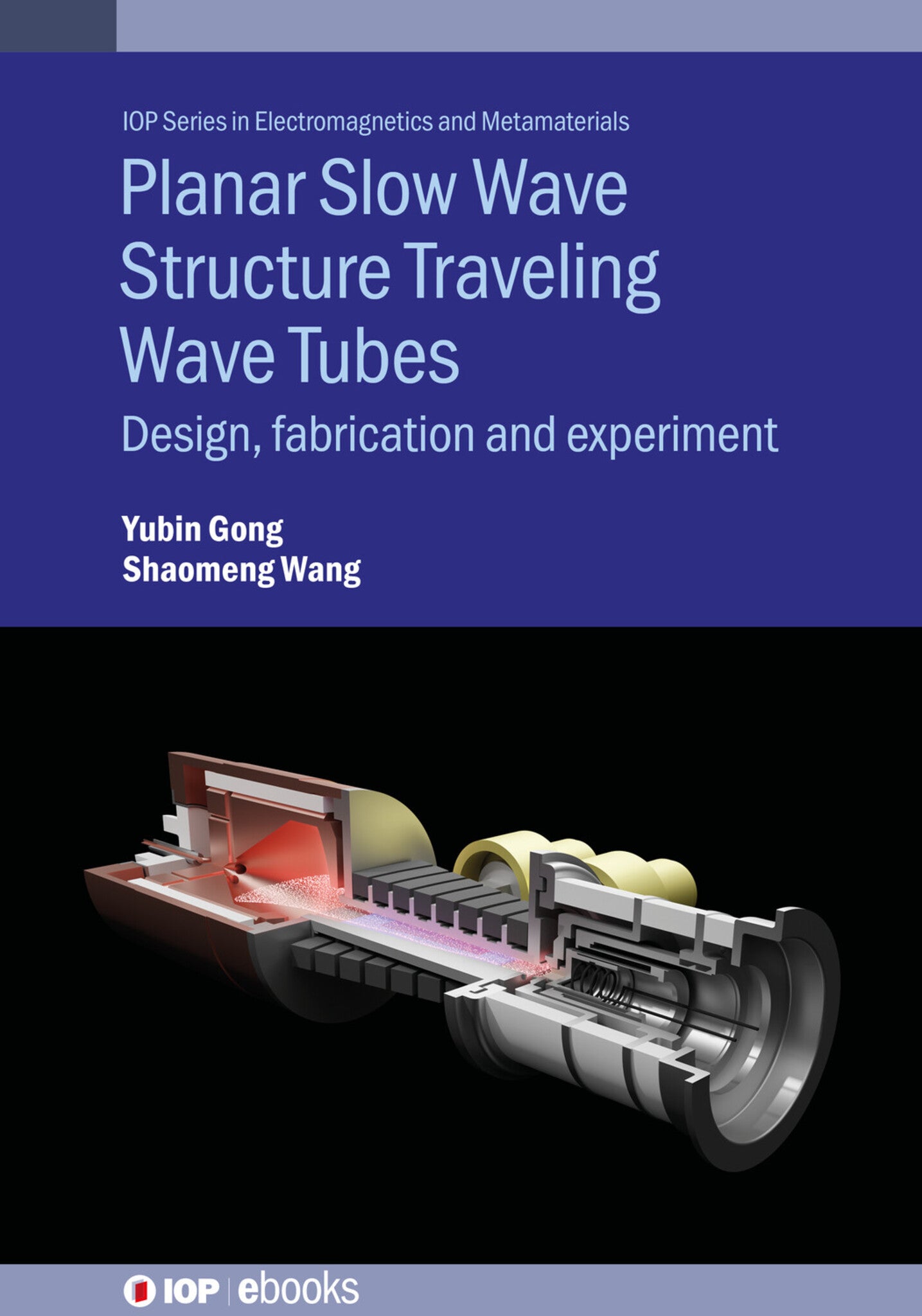We're sorry. An error has occurred
Please cancel or retry.
Planar Slow Wave Structure Traveling Wave Tubes

Some error occured while loading the Quick View. Please close the Quick View and try reloading the page.
Couldn't load pickup availability
- Format:
-
28 October 2024

Traveling wave tubes play a crucial role in fields like communication and broadcasting. Planar slow wave structure traveling wave tubes can settle the power limitation caused by the size reduction in traditional cylindrical-beam traveling wave tubes. Therefore, there are increasingly more researchers contributing to the development of planar slow wave structure traveling wave tubes.
As a competitive candidate for 5G/6G communication, the planar slow wave structure traveling wave tubes are attracting a lot of attention. Yet there is not yet a book which specifically introduces the key points in the development of such a device, this is that book. Readers will learn how the planar slow wave structure traveling wave tubes work and how to design wideband, high efficiency, miniature millimetre wave and terahertz wave amplifiers.
Key features:
- Represents the first book introducing the planar traveling wave tube systematically.
- Presents the first hot-test results of a ka-band planar traveling wave tube.
- Illustrates several novel planar slow wave structures and schemes for millimetre wave and terahertz wave.
- Details the fabrication process of different planar slow wave structures fabricated by different advanced manufacturing techniques.

TECHNOLOGY & ENGINEERING / Electronics / General, Electronic devices and materials, TECHNOLOGY & ENGINEERING / Electrical, SCIENCE / Physics / Electricity, Electrical engineering, Electricity, electromagnetism and magnetism

Chapter 1. Background introduction.
Introduce the new requirements for high power millimeter wave and terahertz wave devices.
Introduce the concepts and advantages of planar slow wave structures traveling wave tubes over the traditional ones.
Introduce the current status of the planar slow wave structures, etc.
Chapter 2. Design and Simulation
Present the basic methodology and topology for designing planar slow wave structures and standing wave structures from transmission lines.
Present the approaches of improving the planar slow wave structures and standing wave structures, i.e., band extension, beam-wave interaction enhancement, oscillation expression, efficiency improvement, etc..
Present the modelling and simulation of the planar slow wave structures and standing wave structures using electromagnetic wave simulation software.
Present the possible applications planar slow wave structures and standing wave structures on other electromagnetic devices or systems and so on.
Chapter 3. Planar Electro-Optics System
Present the novel topologies of planar electron gun using different types of cathodes, different shapes of focusing electrodes and anodes.
Present the advanced beam focusing systems, the design theory and the simulation process.
Present the design method for designing planar multi-depression collector.
Present the possible applications of electro-optical system on manipulating charged particles, etc.
Chapter 4. Fabrications using advanced techniques
Present the fabrication of different types of planar slow wave structure using techniques such as femtosecond laser cutting, MEMS, 3D printing, etc. Analysis results include surface roughness, dimensional error, effect on loss, and cost analysis etc.
Summaries
Chapter 5. Fixtures and Assembly
Present the topologies of fixtures for different kinds of planar slow wave structures/electro guns/focusing systems/collectors, etc.
Present the assembly of the prototypes operating at frequency range of millimeter wave and terahertz wave bands.
Discussion about the integrated processing of the planar devices
Chapter 6. System and Test
Present the power integration methodologies for planar slow wave structure traveling wave tubes.
Present the systems and specific requirements for millimetre and terahertz wave communication and sensing based on planar traveling wave tubes, etc.
Chapter 7. Discussion and Future
Present the conclusions and future improvement methodologies on the planar vacuum electronic devices.



